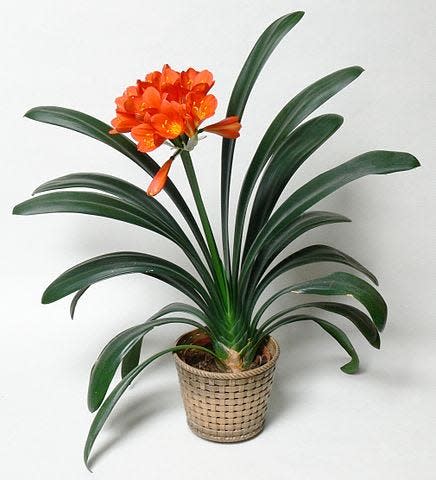CHARLES REYNOLDS: Beautiful begonias for your garden
I’ve never seen a healthy begonia that was unattractive, but plenty of these tropical, herbaceous plants have left me confused. With at least a thousand species and innumerable cultivated varieties, it’s hard to keep track, especially since the different kinds — rhizomatous, fibrous and tuberous-rooted plants — have sometimes been blended. In addition, types differentiated by growth habit also display a combination of traits. Regarding begonias for our landscapes, however, two kinds — rhizomatous and angelwing (cane begonia) —ave proven reliable.
The most popular garden begonias are rhizomatous sorts sold as lotus leaf or lily leaf begonias (B. nelumbifolia), some with leaves as large as 18 by 24 inches. Other rhizomatous types, including Beefsteak and Big Mac, grow up to 3 feet high in light shade on enriched, mulched sites. The rhizomes aren’t puny: they can become 2 inches thick, enabling plants to bounce back after hard freezes. Angelwing begonias, so-called due to their distinctive leaf shape, are cane-forming plants. A few, with stems jointed like bamboo, can grow 10 feet tall. These evergreen plants thrive in light shade, bearing red, pink or white warm-season flowers — unlike rhizomatous kinds that display pink or white blossoms in late winter and spring. Varieties of B. coccinea from Brazil are the most common angelwings. Plants are widely offered online.
ZZ PLANT VS. SNAKEPLANTS
It’s likely your grandmothers kept snakeplants (Sansevieria species and hybrids) in their homes, especially the tall and handsomely variegated S. trifasciata. Also called mother-in-law’s tongue due to sharp leaf tips, snakeplants endure low light and infrequent irrigation. But after a century or more of dominance as the kings of indestructible houseplants, the ZZ plant came along. Both snakeplants and the ZZ (Zamioculcas zamiifolia) are native to Africa. The ZZ looks a bit like a cycad and a bit like a fern but is kin to neither.
Glossy leaflets on arching stems are captivating and, along with ZZ’s camel-like drought tolerance and aversion to direct sunlight, make it an exceptional houseplant. For a while, ZZ usurped snakeplants as the favorite of brown-thumbed apartment dwellers, but snakeplants seem to be regaining their supremacy. That conclusion is based on the number of plants I see for sale locally and in catalogs.

FIRE LILY A NO-FUSS HOUSEPLANT
Clivia miniata, known as fire lily and bush lily, is an old-fashioned houseplant for bright, indirect light. Up to 2 feet tall, this evergreen species has bulb-like leaf bases and bears orange or yellow blossoms in late winter and spring. Fire lilies do best in clay containers filled with a blend of potting soil and perlite. They’re among the few plants that flower more reliably in undersized pots. Plants tolerate dry conditions but not soggy soil. Always irrigate with caution, especially in winter. Fire lily is called kaffir lily in older garden guides and is still listed that way in some catalogs. ‘’Kaffir,’’ however, is a racist term that should be eliminated.
This article originally appeared on The Ledger: Weekend plantings
